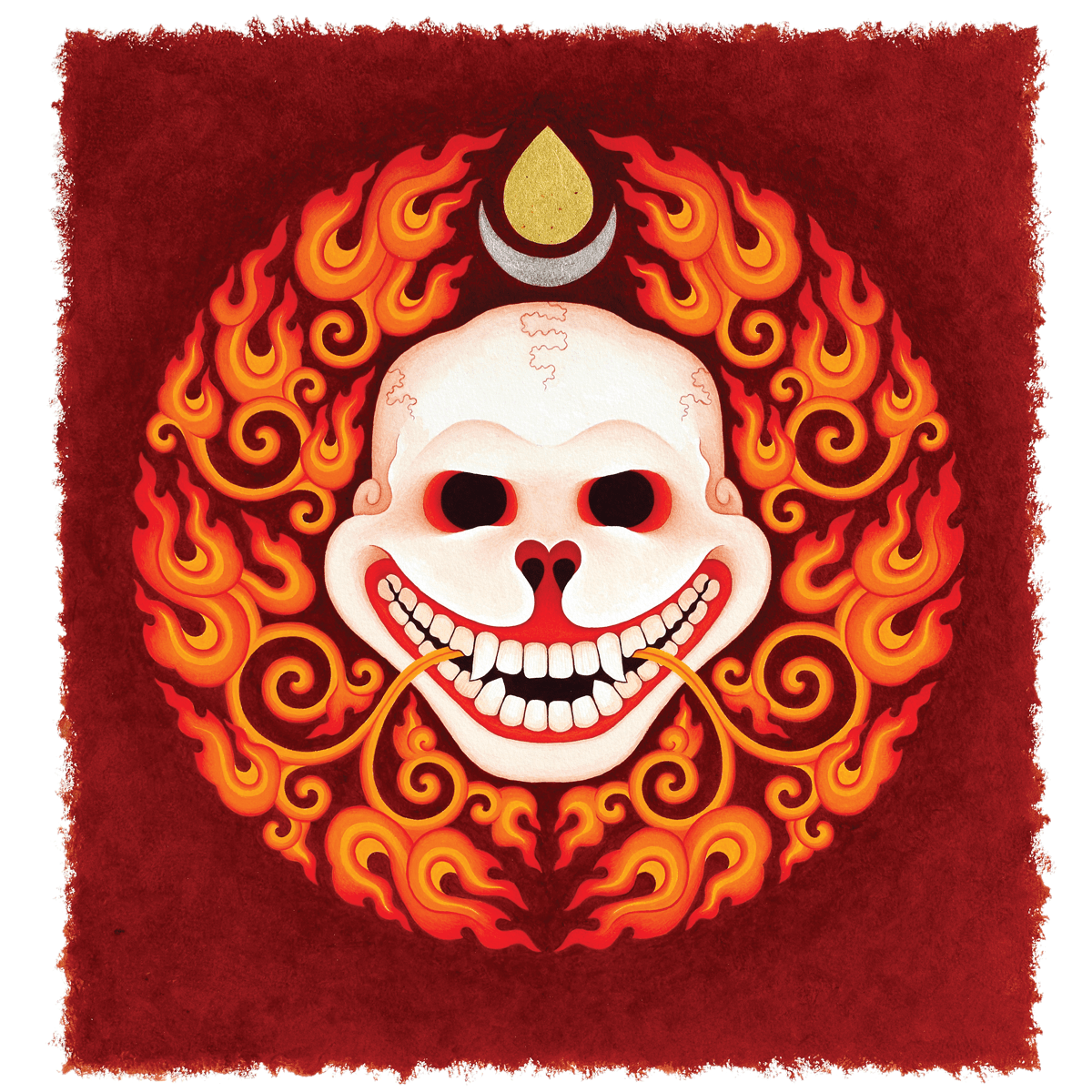This is an absolute must watch!!
Guide to Advance Directives in a fun and very clever rhyming format.
A very good article from Lions Roar Press, by Judy Lief…and love the illustrations. Painting by Tashi Mannox from the series “Laughing in the Face of Death: To live and die without regrets.”
From the article:
“We can begin our exploration right where we are. We have already been born, we are alive, and we have not yet died. Now what? We might connect to our life in terms of a story or a history. For instance, we were born in such and such a time and place, we did this and that, and we have a particular label and identity. But that story is always changing and in process; it is not all that reliable. However, when our story is combined with a physical body, we seem to have something more solid, a complete package. We have something to hang onto and defend. We have something that can be taken away.
But what do we have to hang onto, really? Our story is not that solid. It is always being revised and rewritten. Likewise, our body is not one solid continuous thing. It too is always changing. If you look for the one body that is you, you cannot find it.
The closer you look, the less solid this whole thing seems. When we investigate our actual experience, here and now, moment by moment, we see how fleeting and dynamic it is. As soon as we notice a thought, feeling, or sensation, it has already happened. Poof! It is the same with the act of noticing. Poof! Gone! And the noticer, the one who is noticing, is nowhere to be found. Poof! When we contemplate in this way, we begin to suspect that this life is not all that solid—that we are not all that solid.
This may seem like bad news, but in fact this discovery is of supreme importance. As we begin to see through our mythical solidity, we also begin to notice all sorts of little gaps in our conceptual schemes. We notice little tastes of freedom and ease in which our struggle to be someone dissolves, and we just are. In such moments, at least briefly, we are not being propelled by either hope or fear. We see that continually holding onto life and warding off death as a future threat is not our only option. There is an alternative to our tight-jawed habit of holding on and defending.”

Mindfulness is a very valuable and accessible practice. So much is being written about it today! Don’t drive yourself crazy thinking that you can just sit and be mindful. It’s difficult, and, for most of us, what’s the use? Keep your mindfulness in motion.
We give 40 activities that combine well with mindfulness practice in our book Caregiver Revolution. These are things as simple as making a bed or doing dishes. While cooking dinner, gently let go of the flow of thoughts, plans, worries, (your inner chatter), and really focus on the details of the task at hand. Notice as much as you can about what you are doing and do the job well. Why? Simply because it strengthens your attention. This is not new age fluff. The more you work with your attention, the stronger it gets…just like any skill. Attention is the one skill that everyone has but it generally remains undeveloped, and here’s a big key; focused attention REALLY relieves stress and gives you freedom to be in the present moment.
This might not mean anything to you. So much of this is experiential. If you are an artist, artisan, hobbyist or collector, if you work on crafts of any sort, are a seamstress, a singer, a musician, then you know what this is, you’ve had a taste.
I’m not going to expound a lot on theories of mindfulness. An ounce of practice is worth a ton of theory. So good luck with your mindfulness in motion practice. Return again and again to the present. This never comes easy but it becomes easier and you will realize the benefits as you go.